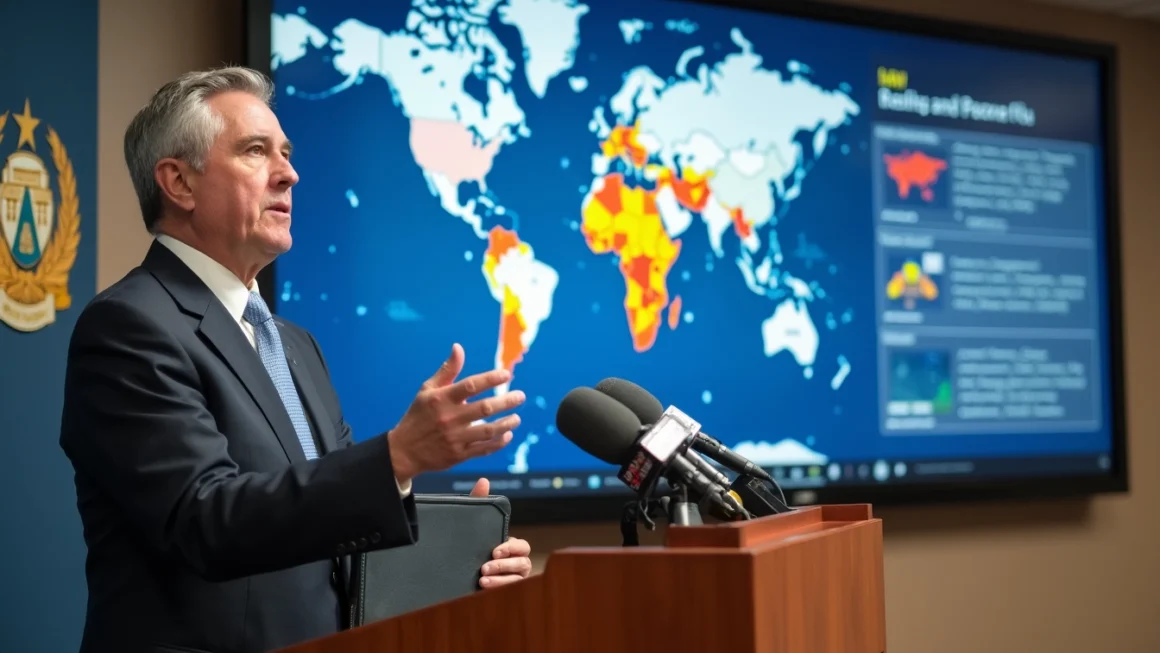In a concerning development, health officials have reported the first severe human case of bird flu in the United States. The Centers for Disease Control and Prevention (CDC) confirmed that an individual in Louisiana contracted the H5N1 avian influenza virus, marking a significant milestone in the spread of this disease.
Understanding the Case
Table of Contents
The patient, whose identity remains undisclosed for privacy reasons, was exposed to infected poultry. This exposure led to the development of symptoms, including pneumonia and respiratory failure, necessitating hospitalization. The CDC emphasized that while this case is serious, it appears to be an isolated incident with no evidence of human-to-human transmission.
Bird Flu: A Global Concern
Avian influenza, commonly known as bird flu, has been a persistent threat to both animal and human health. The H5N1 strain, in particular, has caused significant outbreaks in bird populations worldwide. While primarily affecting birds, the virus occasionally crosses the species barrier, infecting humans who have close contact with infected animals.
Impact on Wildlife and Agriculture
The current strain of bird flu has had devastating effects on wildlife, particularly affecting seabirds and various mammal species. In the agricultural sector, it has led to the culling of millions of poultry, causing economic challenges for farmers and disruptions in the food supply chain.
Public Health Response
In response to this case, health authorities have heightened surveillance and are implementing stringent measures to prevent further spread. The CDC, in collaboration with state and local health departments, is conducting thorough contact tracing and monitoring individuals who may have been exposed.
Preventive Measures
Health officials are urging the public to take precautions, especially those who work with poultry or wild birds. Recommended measures include:
- Wearing protective gear when handling birds
- Avoiding contact with sick or dead birds
- Proper hygiene practices, including frequent hand washing
- Reporting any unusual bird deaths to local authorities
The Broader Context of Zoonotic Diseases
This case of bird flu highlights the ongoing challenge of zoonotic diseases – those that can jump from animals to humans. In recent years, there has been an increased focus on the potential for such diseases to cause widespread outbreaks or even pandemics. The interconnectedness of human health, animal health, and environmental factors underscores the importance of a “One Health” approach in addressing these challenges.
Global Surveillance and Research
Scientists and health organizations worldwide are continuously monitoring the evolution of avian influenza viruses. Research efforts are focused on understanding how these viruses adapt to infect humans and developing more effective vaccines and treatments. Automated systems for data collection and analysis play a crucial role in these efforts, enabling rapid response to emerging threats.
Looking Ahead
While this case is a reminder of the potential dangers of bird flu, it’s important to note that human infections remain rare. However, it underscores the need for continued vigilance, research, and preparedness in the face of evolving infectious diseases.
Public Awareness and Education
Educating the public about the risks associated with bird flu and other zoonotic diseases is crucial. This includes providing information on:
- Recognizing symptoms of bird flu in humans and animals
- Understanding the importance of biosecurity measures in farms and wildlife areas
- The role of personal hygiene in preventing the spread of diseases
Conclusion
The first severe human case of bird flu in the U.S. serves as a stark reminder of the ongoing challenges posed by zoonotic diseases. While there’s no cause for panic, it emphasizes the importance of continued research, surveillance, and public health measures. As we navigate this evolving landscape, collaboration between health organizations, researchers, and the public will be key to effectively managing and preventing future outbreaks.
By staying informed and adhering to recommended safety guidelines, we can all play a part in mitigating the risks associated with bird flu and similar threats to public health. As this situation develops, it will be crucial to follow updates from health authorities and remain adaptable to new information and guidelines.




